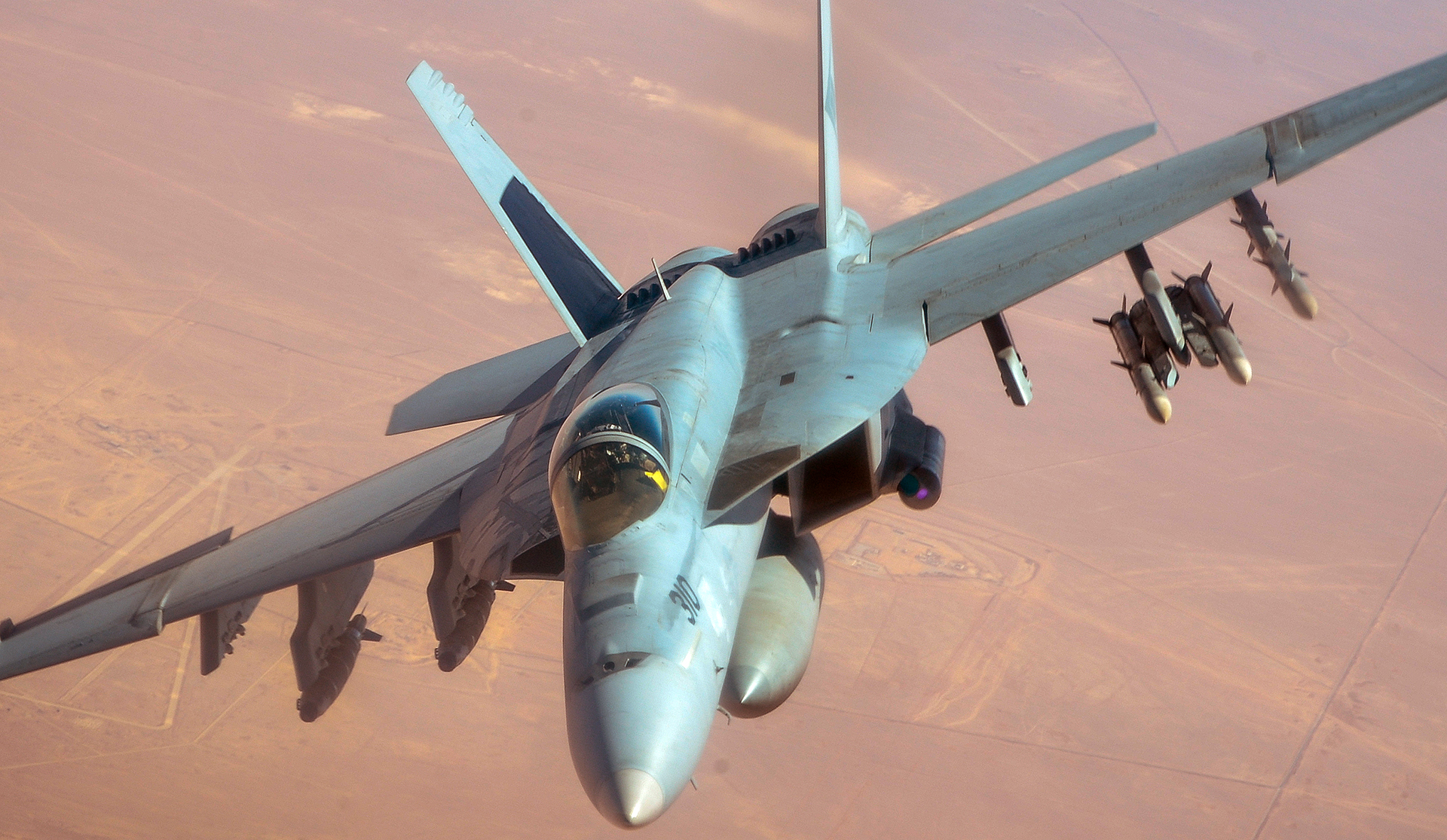Yemen’s Houthis unleashed a new onslaught of anti-ship and land attack weaponry today around the southern end of the Red Sea. U.S. Central Command says the Arleigh Burke class destroyer USS Laboon (DDG-58) and F/A-18 Super Hornets from the Eisenhower Carrier Strike group shot down a dozen one-way attack drones, three anti-ship ballistic missiles, and two land attack cruise missiles. The series of engagements occurred over a 10-hour period starting at 6:30 AM local time. Not one of the weapons hit its mark.
Editor’s note: For full context and background, make sure to get caught up on what is going on with the crisis around the Red Sea in our latest update posted earlier today.
The fact that Super Hornets scored kills is a new development. They would constitute just the second (and possibly more) aerial kill by a F/A-18E/F, the first being an Su-22 over Syria in 2017. While the Israeli Air Force has shot down Houthi drones since October 7th (and apparently did so again today, as seen in the tweet below), and it’s possible Saudi Arabia, which has a long history of air-to-air kills on drones emanating from Yemen, may have as well, U.S. fighters have not. The employment of Super Hornets in the air defense role isn’t that surprising though, as the USS Dwight D. Eisenhower (Ike) is currently loitering in the Gulf of Aden. This body of water is separated from the Red Sea by the narrow and tumultous Bab el-Madeb Strait.
The Super Hornets are capable assets against drones and cruise missiles. Their AN/APG-79 is arguably the most mature active electronically scanned array (AESA) radar on the planet. AESAs are more than capable of spotting, tracking, and assisting in the engagement of low-flying and small targets like drones and cruise missiles. Their ATFLIR targeting pods can also provide a visual of the target from far away that is useful for identification friend or foe (IFF) purposes. In this circumstance, it may prove extremely valuable for intelligence collection purposes in regard to understanding exactly the types of drones and cruise missiles Houthi forces are firing and at what.
U.S. Navy Super Hornets can also carry an advanced infrared search and track (IRST) system, which has seen limited deployment to the Middle East before. This system would be hugely valuable in spotting these kinds of targets, but it isn’t clear if the Ike’s Super Hornets have access to them for this deployment as the system has been mired in developmental issues.

The Super Hornet’s AIM-9X Sidewinder and AIM-120 AMRAAMs are both capable against both target types — drones and cruise missiles. Although, as the Saudis could attest, the AIM-120 has proven more reliable for engaging drones with very small signatures. The F/A-18E/Fs also have a 20mm cannon, but hitting a small target like a drone could prove problematic and concerns about where those rounds will fall is certainly a factor.
The Super Hornet’s most potent feature is perhaps its networking capabilities, which allow it to receive and share high-quality targeting information from Aegis-equipped surface combatants below and the all-seeing E-2D Hawkeye above. The Hawkeye, with its incredible ‘look down’ radar capabilities able to surveil a vast area and its networking abilities that ‘ties’ the strike group together, as well as its highly trained crew that enables it, is potentially the most important asset the Ike brings to the table for this mission at this time.

Navy Arleigh Burke class destroyers like Laboon have already proven very capable of protecting themselves and other vessels against Houthi threats with their arsenal of surface-to-air missiles. However, Super Hornets can fly out far ahead of naval assets and protect those assets and key areas, while also investigating potential threats – something surface-to-air missile systems can’t do. This flexibility is incredibly valuable in a complex battlespace situation such as the one being faced in the crowded Red Sea today.
The mention of land-attack cruise missiles in this latest incident is also of interest. Were these threatening a land target far off in Israel? This could make sense considering the IAF shot down a drone today over the northern Red Sea, as well. If a closer land target was the missiles’ destination, that would be a major, troubling development. We have discussed how America’s massive installation in Djibouti is of great concern because it only sits 100 miles from Yemeni shores. The stability of that critical base is based on complex geopolitical factors that could be disrupted if it becomes a target and defending it would be resource intensive. On the other hand, maybe CENTCOM misspoke and these were anti-ship cruise missiles, the likes of which we have seen the Houthis fired off many times before.
Also notable about this statement is no other participation by allied warships is mentioned. Considering the U.S. has begun its Operational Prosperity Guardian, it’s interesting that no other vessels were involved with downing all these missiles and drones or, if they were, that information is being omitted.
The fact that the Houthis are still firing such a large number of weapons over such a short period shows how little they are deterred from doing so and, with the help of Iran, appear well-supplied to sustain their anti-shipping campaign.
This is a continuing story, we will update it with additional information when it becomes available.
Contact the author: Tyler@thedrive.com
